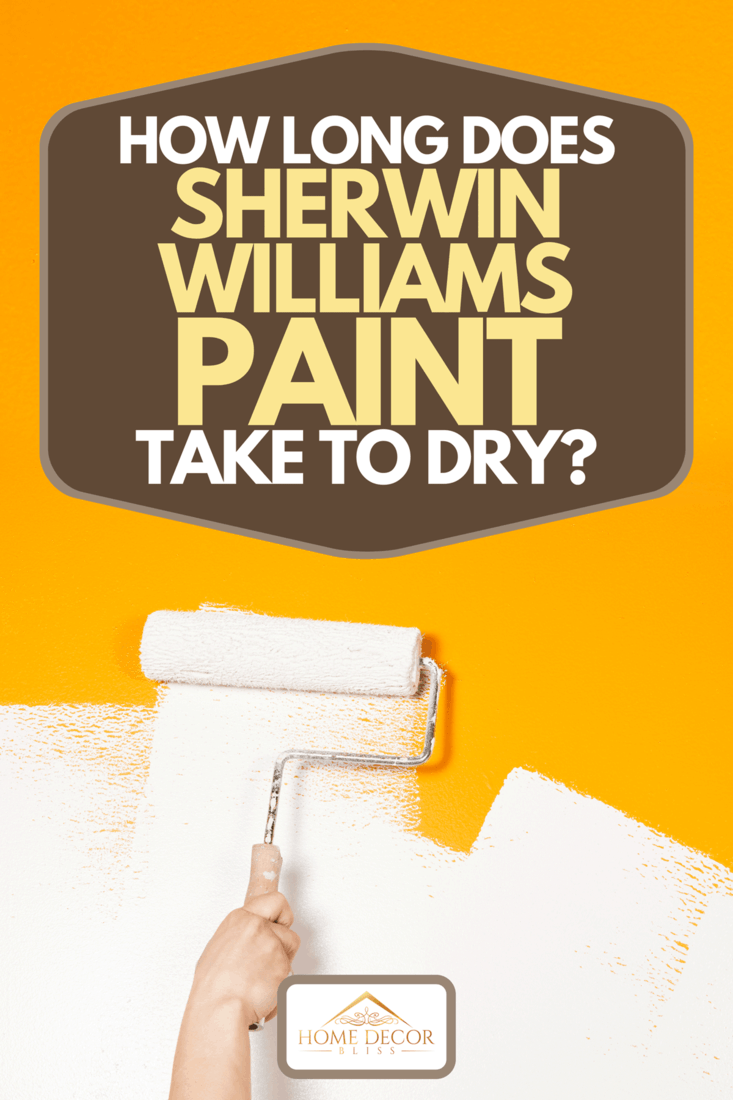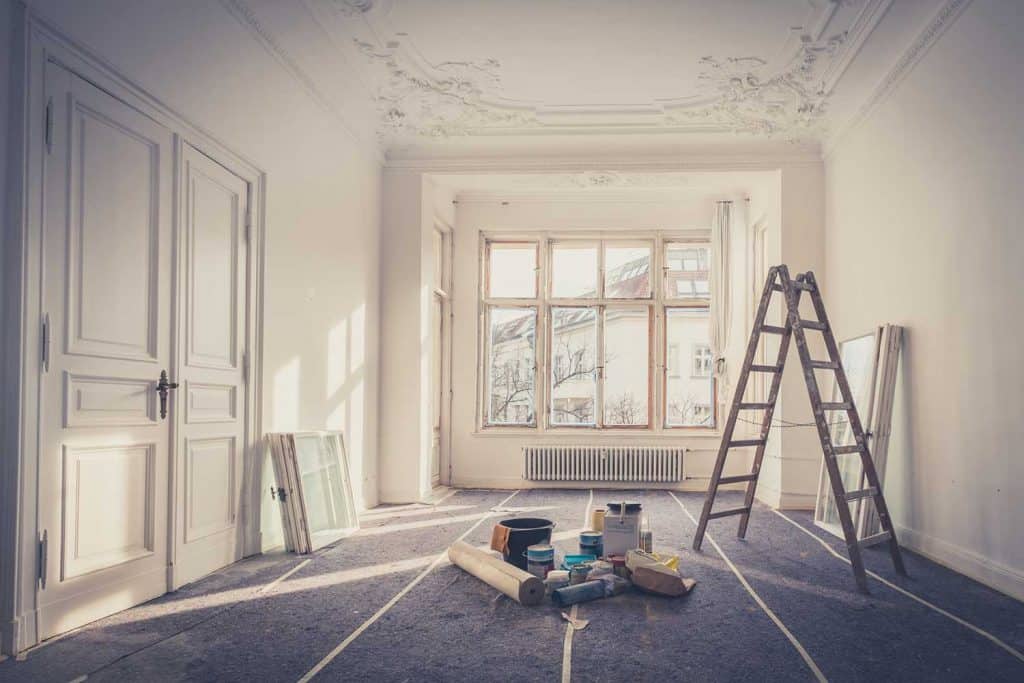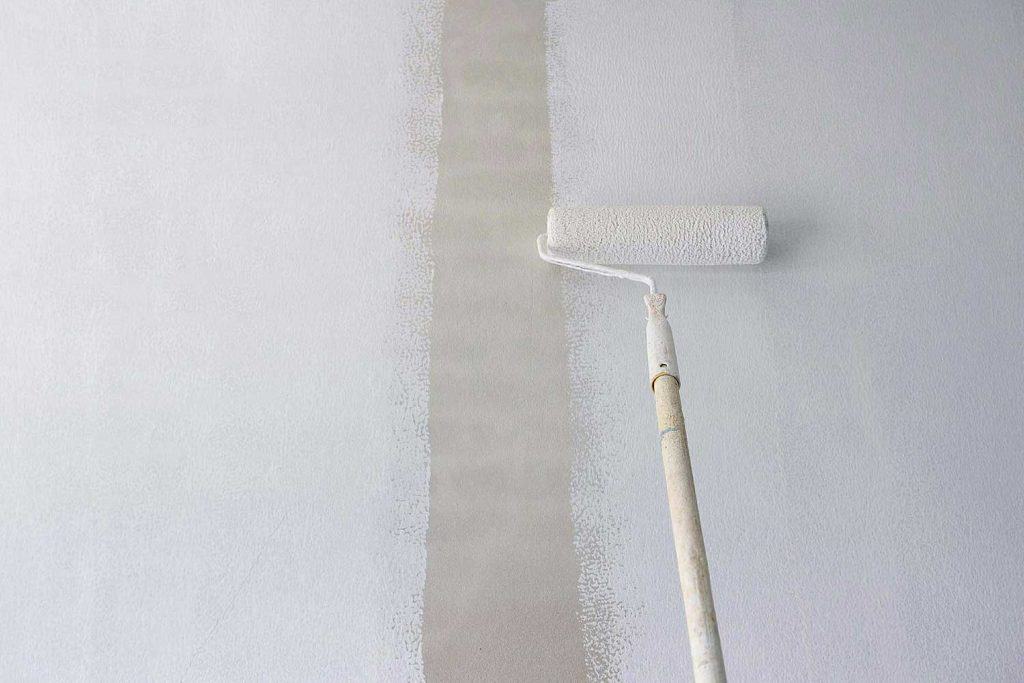Painting your home is a great way to revitalize a room, and Sherwin Williams is a well-known, highly recommended paint supplier. If you're wondering how long it will take for Sherwin Williams paint to dry, you've come to the right place. We've researched the different paint types for this brand and how long each one will take to dry so you can plan your painting project without any surprises!
Sherwin Williams offers two kinds of paint: oil-based or water-based.
- Sherwin Williams oil-based paint, with the main ingredient Alkyd, will dry overnight.
- Sherwin Williams water-based paint, also known as latex paint, will be dry to the touch within an hour.
You should wait two to four hours between coats for water-based paint and at least 24 hours between oil-based coats unless directed otherwise by the manufacturer's instructions.
We'll go over each of these in a little more detail shortly. Keep reading as we discuss how long you should wait between coats of paint, what happens if you paint a second coat too soon, and whether there is such a thing as too many coats of paint. We'll also cover some more questions you might have regarding Sherwin Williams paints!

Dry Times for Sherwin Williams Paints

We may include affiliate links and curated AI content to highlight top design styles.
Though painting on a hot day will help speed up your dry time, allowing your paint to dry quicker than the recommended dry time can cause more harm than good. If you're painting in an environment where the temperature is 100℉ or higher, your paint may have trouble adhering to the surface, which will result in your paint peeling later on.
You should also make sure to have your painting finished with three to four hours of dry time before dark. This allows the paint to dry enough that moisture shouldn't get on the film and cause any problems.
Oil-Based Paint
Oil-based paint will take longer to dry but is more durable than water-based paint. Oil-based paint needs to be left overnight. It is best to use oil-based paints on exterior walls, doors, floors, or trim that will need to withstand wear and tear. If your project involves any of these surfaces, don't try to save on drying time by using water-based paint, you'll be trading a few hours of drying time for even more hours having to repaint in the future. You should leave at least 24 hours between oil-based paint coats.
Water-Based Paint
Water-based is the most common type of paint and is favored for its quick dry time. It is great for low traffic areas such as interior walls or ceilings. It dries quickly within an hour, but you should always leave 24 hours between your first and second water-based coats.
Painting Another Coat

Second coats of paint will help fill in any brush or roller strokes and help cover any patchy areas. Unless you are touching up an existing paint job, most paints will require another coat for the surface to look smooth and uniform, but it is not as simple as just applying a second coat right after the first. You can quickly ruin your hard work if you apply a second coat too soon.
What Happens If You Paint A Second Coat Too Soon?
If you paint a second coat too soon without giving the first coat adequate time to dry, you'll experience streaks and an uneven finish from the paint pulling up. You might also find yourself with peeling paint. Try to avoid ruining all of your hard work by following the paint cans' directions for drying time.
Waiting for the first coat to dry completely also makes painting the second coat easier. It'll be easier to see which part of your surface still needs another coat because wet paint looks slightly different from dry paint.
Does A Second Coat Require Less Paint?
The second coat of paint will not require as much paint as the first because less coverage is needed. The second coat is a thinner layer to help smooth over any brush strokes or patches that might've been left after the first coat dried. Since the first coat did the majority of the coverage work already, you will use less paint.
Make sure you clean your paintbrush and roller in between painting different coats. Dried up paint on the brush or roller will make it less efficient at picking up new wet paint and can cause uneven coverage. Water-based paints can be cleaned with water, but oil-based paints will need a paint-thinner.
Click here to see Sunnyside Paint Thinner on Amazon.
Are 3 Coats Of Paint Too Much?
If you have finished your second coat of paint and it still looks patchy, adding a third coat is absolutely fine and sometimes necessary, especially if you use a darker, deeper color. However, Sherwin Williams paints rarely need more than two coats, so make sure you are given adequate drying times between coats, or it will seem like you'll need to keep adding coat after coat.
Tips For Needing Less Coats Of Paint
Make sure you are not pressing too hard with the roller, trying to use as much of the paint on the roller before adding more, as this can leave streaks behind. Don't be afraid to reapply paint to your roller sooner to get an even layer of paint on your surface. Reload the roller as soon as it starts to seem a little thin.
Make sure to invest in quality paint and quality tools for the best results. For some ideas on different types of paint rollers, check out our other blog post on "17 Types Of Painting Rollers."
Your paint will have a rate of application on it to tell you how much square footage one can covers, so be sure to read the directions on the can to see if you are applying it at the correct rate. If you're applying too much or too little, it can affect the number of coats you will need. Also, consider using a primer before painting. This will prep the wall for painting and reduce the chances of needing a third coat of paint.
Does Sherwin Williams Paint Need Primer?

You may be tempted to skip primer, but it can be really beneficial to use in your paint process. You can get away without using a primer if the wall has been painted previously and the previous color is lighter than the shade you are planning to repaint it. Still, if the area you are planning to paint has never been painted, you will definitely have to use a primer beforehand.
Using a primer will save you time and money. It helps create a smoother, better surface for your paint to adhere, and is cheaper than a can of paint. Not using a primer can result in needing more paint coats, especially if you are painting with a deep color, such as red, that might already need more than two coats of paint, to begin with.
Sherwin Williams offers types of paint that include primer, which will work fine for painting over an already painted surface. To achieve a true color, even in this situation, it is better to use a primer beforehand. Sherwin Williams also recommends using a primer before painting over metal, wood, and plastic.
Final Thoughts
For the best results when painting, follow any directions on the paint cans. Be patient and allow an adequate amount of drying time between coats to save you time and money in the long run. Remember that water-based paints will dry quicker than oil-based paints! Hopefully, we've given you plenty of tips and helpful information for a stress-free paint project! Happy painting!
For more reading, check out "What Is The Best Paint For Baseboards?"





Just painted all surface enamel on my steel front door. Was told to put two coats for a better finish. Will wait 24 hours before the second coat, but do I use a very fine sanding paper, 320, before the second coat in order to have a beautiful finish. I have been using Sherwin Williams paint for the last 30 years (I’m 82 years old) and love the product.